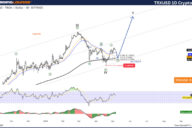
One of the unspoken delights in life is the rich satisfaction that comes with bearing witness to the spectacular failure of offensive and unjust system. This week served up a lavish plate of delicious appetizers with both a style and refinement that’s ordinarily reserved for a competitive speed eating contest. What a remarkable time to be alive.
Many thrilling stories of doom and gloom were published across the tops of the finest digital news sites. The main object of our satisfaction, however, was buried further down the pages, well below the latest Trump tweets and relentless reports on the global war buildup. Nonetheless, our focus is not without merit.
Today’s foil is played by Bank of Japan (BoJ) Governor, Haruhiko Kuroda. If you’re ignorant of Mr. Kuroda, we apologize. What follows shall forever end your bliss.
You see, Kuroda and his cohorts at the BoJ have been surfing the razor’s edge, executing policies of mass money debasement, for several decades. In fact, their forward thinking ways – and good intentions – have become a source of national pride. There’s not a deranged monetary policy idea the Japanese brain trust hasn’t pioneered in the name of saving the nation from itself.
Negative interest rates. Direct purchases of Japanese stocks via exchange-traded funds (ETFs). Government sponsored shopping sprees. They’ve tried it all. And they’ve tried a lot of it. All to suspend the deflationary effects that followed the bursting of a cheap credit induced asset bubble that popped nearly 30 years ago.
Brutal Trifecta
Kuroda, and those who came before him have gone about their business with steady hands, blind eyes, and a zealous belief that they could increase wealth by increasing the supply of money. Indeed, our hats are off to them; their track record’s unblemished. They’ve achieved a 100 percent success rate of failure.
By all accounts, the Japanese economy’s stagnated over the last quarter century. At the same time, government debt has jumped up and off the chart. The last we checked, Japan’s government debt had exceeded 250 percent of the country’s gross domestic product (GDP).

















No Comments